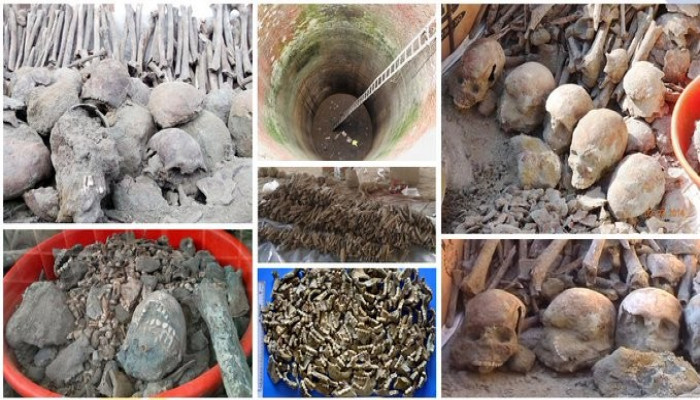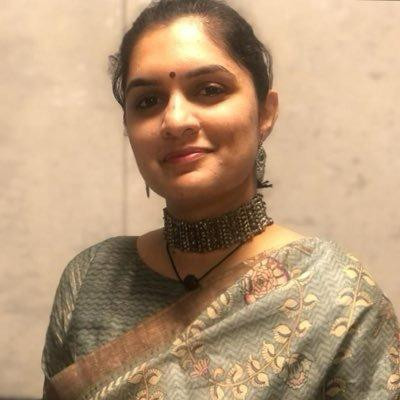The Forgotten Martyrs of Ajnala: The Battle for Last Rites and Justice
- In History & Culture
- 07:39 PM, Feb 17, 2025
- Gargi Joshi
The year was 1857, and Bharat was ablaze. The great uprising—what the British tried to dismiss as a mere "mutiny"—was, in truth, a war for independence. From Delhi to Kanpur, from Lucknow to Jhansi, the sons of Bharat rose as one, determined to reclaim their land from foreign rule.
Among these warriors were the 282 soldiers of the 26th Native Bengal Infantry, stationed at Mian Meer (now in Pakistan). They had taken an oath to fight for Bharat, to stand against the tyranny of the British. And so, when the moment came, they killed their British officers and began their march toward Delhi.
But fate had other plans.
As they followed the Ravi River, moving through Punjab, the locals aided them, feeding them, hiding them, guiding them on their way. But treachery lurked in the shadows. A British informer betrayed their location to Frederic Cooper, the Deputy Commissioner of Amritsar.
And so began the dark chapter of the Ajnala Massacre.
Betrayal, Slaughter, and the Well of Death Cooper, an Englishman desperate to make a name for himself, assembled a regiment of British forces and marched toward Ajnala. There, in the dead of night, they ambushed the unsuspecting soldiers.
Some warriors were killed on the spot, their blood staining the soil they had fought for. But 282 were captured alive.
They were crammed into a small, suffocating room. There was no air, no water, no escape.
By morning, 35 of them were dead, their breath stolen by the crushing weight of their comrades. They had suffocated in the darkness, fighting till their last moment for a breath of air.
But Cooper was not done.
He dragged the remaining 247 out, their hands tied behind their backs. He lined them up in groups of ten, and without hesitation, ordered their execution.
The British officers stood at point-blank range and fired into their skulls. But even in their death, the warriors did not break. Some clutched tightly to their murtis of Bhagwan Shiva and Hanuman, their faith giving them strength even in the face of death. For the British, bullets were too precious. So, in an act of pure cruelty, some soldiers were shot with stone bullets. These were not meant to kill instantly—they were meant to shatter bones, rupture flesh, prolong agony.
And then, the final horror—the well.
The lifeless and dying bodies were dragged across the bloodied ground and thrown into a deep well—a pit of darkness that would become their unmarked grave.
Some were still gasping for breath, their bodies broken but their spirits unyielding.
The British, not satisfied, poured lime and charcoal into the well, ensuring that the bodies would decay faster, erasing all evidence. Then, silence. The massacre was complete. The British erased their names, wiped them from history, and ensured no one would remember. But history, like truth, cannot remain buried forever.
Alam Beg, a soldier from Kanpur, escaped Ajnala’s massacre but was later captured. The British reserved a fate worse than death for him—execution by cannon.
His severed head was taken as a trophy to England, where it was later found in a British pub, forgotten, with a chilling note on his eyeball socket:
"I am Alam Beg. I revolted against the British government. I am a traitor." His family, traced to New Delhi, still waits to perform his last rites. But the British refuse to return his remains.
The Man Who Refused to Forget: Surinder Kochhar’s Obsession For 150 years, the Ajnala Massacre remained hidden. No history books spoke of it. No memorial stood for the martyrs.
Then, in 2003, fate intervened.
Surinder Kochhar, a journalist from Ajnala, was wandering the streets of London when he stumbled upon an old book in a second-hand shop. He flipped through the pages, and then—his heart stopped. Ajnala.
The book was written by Frederic Cooper himself, the very man who had ordered the massacre. And in its pages, he boasted of his crime. Kochhar could not believe what he had found. He bought the book, returned to Bharat, and began searching for the well. But history had been buried too well.
There were no records. No official acknowledgment. No map marking the location of the well.
Yet, history is never truly forgotten—it lingers in whispers, in the memories of the old.
Kochhar spoke to elders, and some remembered.
"Our ancestors spoke of a well… a well of bones… the British killed them and dumped them inside."
And so, the search intensified.
By 2013, after years of relentless pursuit, Kochhar found the well. But there was one problem—a Gurudwara had been built over it.
Removing a religious structure was no easy task. Kochhar met with the Gurudwara committee, pleading with them to move the structure, explaining the truth.
Finally, after much struggle, they agreed to shift it 100 meters away. But even then, no one listened.
Kochhar wrote to the Indian government, the Archaeological Survey of India, the Prime Minister's Office—no one responded. So, he took matters into his own hands.
The Digging: A Moment of Truth, on February 28, 2014, Kochhar and his volunteers began digging. But after six feet, there was nothing. The volunteers wanted to stop. And then, Kochhar made his legendary statement:
"If the remains do not come out, bury me and my family right here." The digging continued. And then—the bones began to emerge.
- 90 skulls 2. 170 jawbones 3. Over 5,000 teeth 4. Coins, medals, murtis of Bhagwan Shiva and Hanuman The truth had been found. But this was not done scientifically. So, there was a lot of damage. Additionally, if the ASI and Government had acted, the well could've been turned into a live museum.
- Science vs. Lies: The Fight for Truth: The British had tried to erase them. And now, so-called historians with an agenda tried to distort the truth. They said, “These were victims of 1947 Partition.” “These were British soldiers killed by Indians.” “These were random villagers.” But science crushed these lies.
- DNA testing by Dr. Gyaneshwer Chaubey, Dr. J.S. Sehrawat, Dr Niraj Rai and Dr. K. Thangaraj proved:
1. The remains belonged to South Asians from the Gangetic Plains.
2. They matched the soldiers of the 26th Native Bengal Infantry.
3. Forensic evidence showed they were executed at point-blank range.
Truth had won.
The Struggle to Perform the Last Rites Even after 150 years, the fight is not for revenge but for dharma. My professor, Dr. Gyaneshwer Chaubey, and his team of scientists are still working tirelessly to trace the families of these martyrs.
Their goal? To give them their last rites according to Sanatana Dharma (for Hindus) and Islam (for Muslims).
But the British government continues to deny our requests for their names. They meticulously keep all records, yet refuse to release this one.
This is a continuation of their colonial grip on our minds. They wiped out the names so that we would forget. They still refuse to acknowledge the 1857 war as a national uprising.
The Fight for Justice Is Not Over, as Veer Savarkar wrote in The Indian War of Independence 1857: "The war begun on the 10th of May 1857 is not over… nor can it ever cease till our Motherland stands free!".
It is time for all Bharatiyas (Hindus and Muslims) whose forefathers fought together in the 1857 war, to come together.
We must demand that the Indian government put pressure on Britain. The British meticulously document everything—then why are they not releasing the names?
This is not just a fight for history.
This is a fight for dharma, for justice, for Bharat.
The war is not over until we do not stand free of the colonial burdens.
It will be on until the last rites are done.
Image provided by the author.







Comments